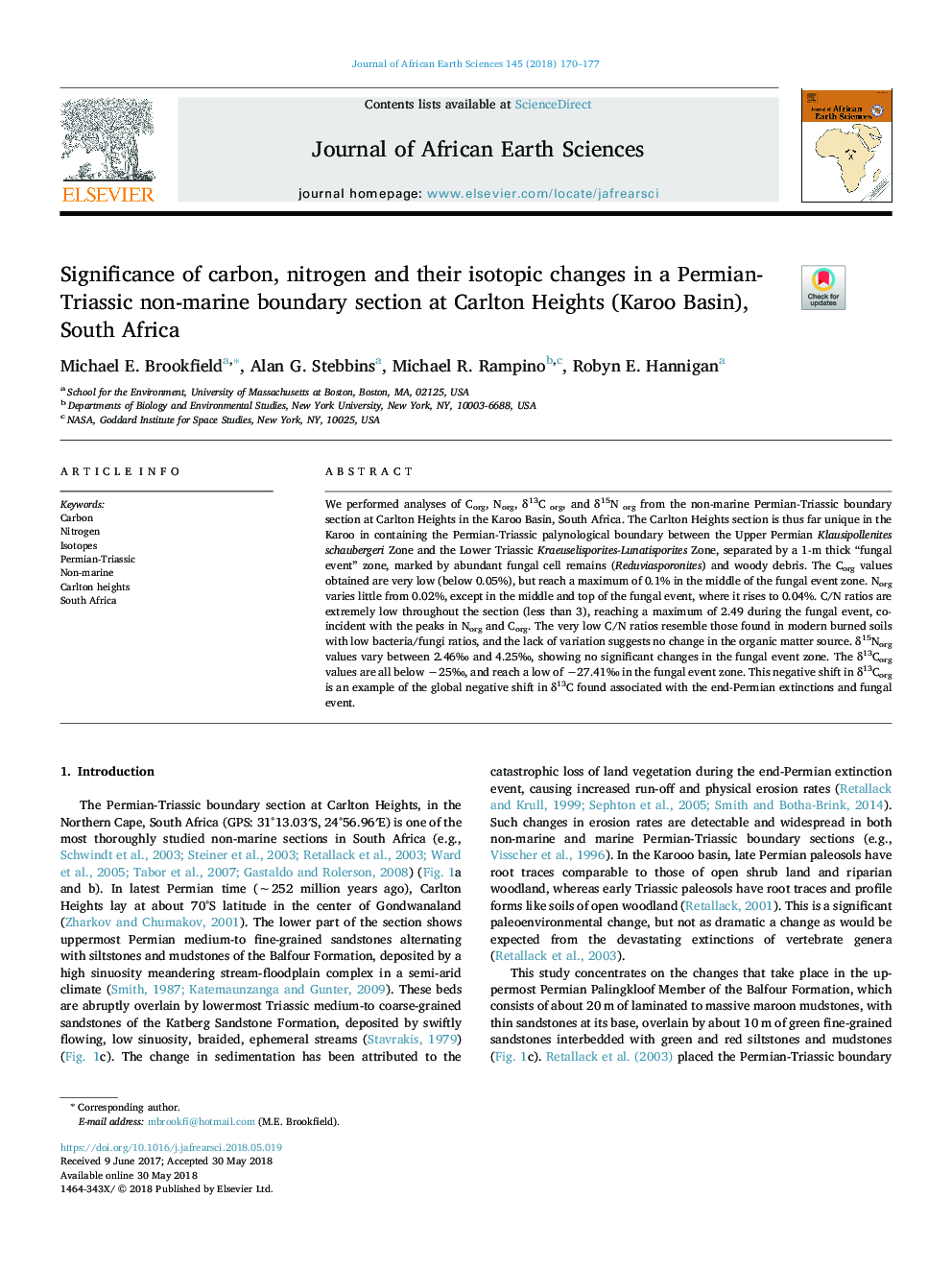| Article ID | Journal | Published Year | Pages | File Type |
|---|---|---|---|---|
| 8913385 | Journal of African Earth Sciences | 2018 | 8 Pages |
Abstract
We performed analyses of Corg, Norg, δ13C org, and δ15N org from the non-marine Permian-Triassic boundary section at Carlton Heights in the Karoo Basin, South Africa. The Carlton Heights section is thus far unique in the Karoo in containing the Permian-Triassic palynological boundary between the Upper Permian Klausipollenites schaubergeri Zone and the Lower Triassic Kraeuselisporites-Lunatisporites Zone, separated by a 1-m thick “fungal event” zone, marked by abundant fungal cell remains (Reduviasporonites) and woody debris. The Corg values obtained are very low (below 0.05%), but reach a maximum of 0.1% in the middle of the fungal event zone. Norg varies little from 0.02%, except in the middle and top of the fungal event, where it rises to 0.04%. C/N ratios are extremely low throughout the section (less than 3), reaching a maximum of 2.49 during the fungal event, coincident with the peaks in Norg and Corg. The very low C/N ratios resemble those found in modern burned soils with low bacteria/fungi ratios, and the lack of variation suggests no change in the organic matter source. δ15Norg values vary between 2.46â° and 4.25â°, showing no significant changes in the fungal event zone. The δ13Corg values are all below â25â°, and reach a low of â27.41â° in the fungal event zone. This negative shift in δ13Corg is an example of the global negative shift in δ13C found associated with the end-Permian extinctions and fungal event.
Related Topics
Physical Sciences and Engineering
Earth and Planetary Sciences
Geology
Authors
Michael E. Brookfield, Alan G. Stebbins, Michael R. Rampino, Robyn E. Hannigan,
